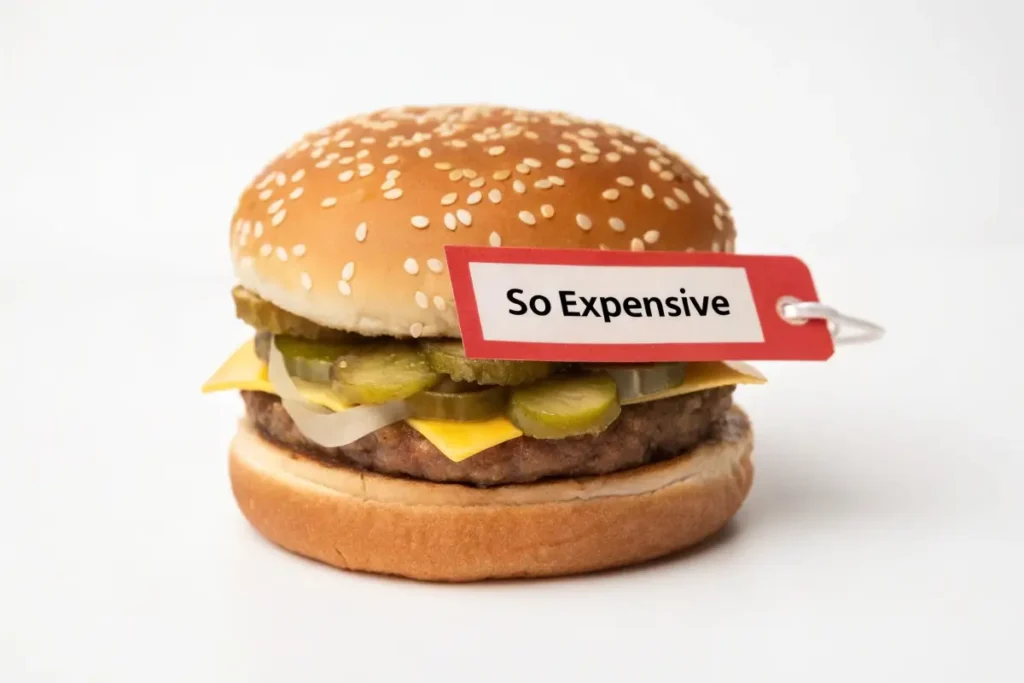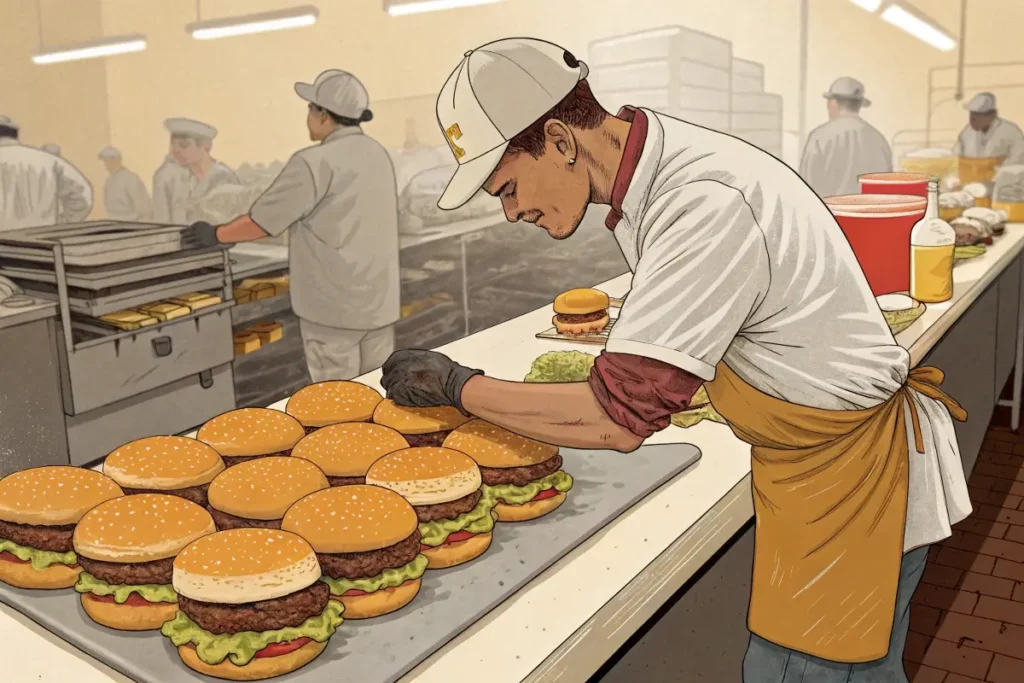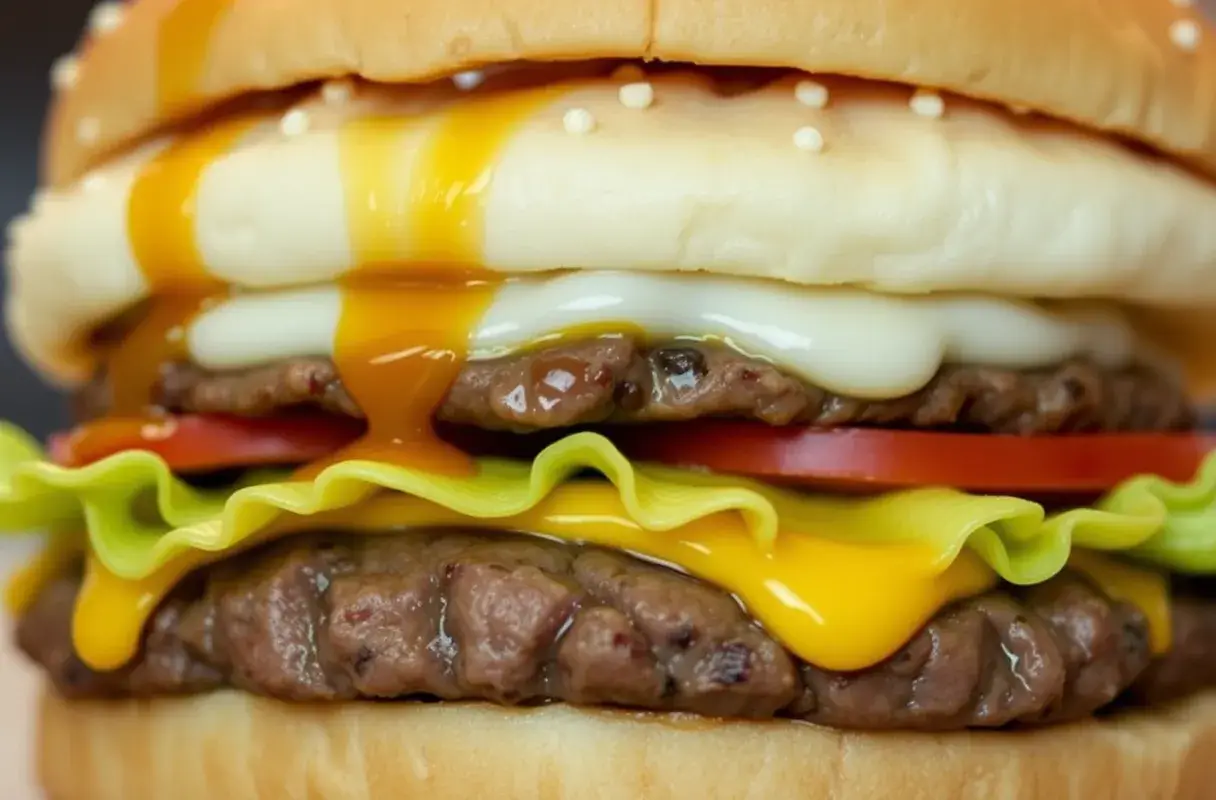The Big Mac is one of the most recognizable fast-food burgers worldwide, yet many consumers often wonder: Why is the Big Mac so expensive? This iconic sandwich, known for its signature sauce and triple-layer bun, doesn’t come cheap when compared to some of its competitors or even other McDonald’s menu items. To understand the higher price point, we need to look beyond the simple notion of profit and explore the myriad factors that impact its cost. From the quality of ingredients and labor expenses to global economic influences and marketing investments, this comprehensive guide will reveal exactly why the Big Mac carries a premium price tag.
Ingredients: Why is the Big Mac So Expensive Due to Quality?

One of the most significant reasons behind the Big Mac’s cost is the emphasis on ingredient quality. Unlike budget burgers that might rely on cost-cutting measures, McDonald’s invests heavily in ensuring the Big Mac maintains a consistent, premium taste.
Premium Ingredients in the Big Mac
- 100% Beef Patties: McDonald’s prominently states that its Big Mac patties are made from pure beef, sourced without fillers, extenders, or artificial preservatives. Achieving this level of purity isn’t cheap. It requires strict supplier guidelines, meticulous processing methods, and ongoing quality checks. Each patty must meet exacting standards to ensure a uniform taste and texture, driving up the cost.
- Big Mac Sauce: This proprietary blend sets the Big Mac apart from simpler burgers. The sauce involves a combination of mayonnaise, relish, mustard, and various spices. McDonald’s invests in sourcing quality ingredients for the sauce and maintaining consistency across thousands of locations. The complexity and uniqueness of the sauce demand supply chain reliability and quality assurance measures that inevitably add to the burger’s expense.
- Fresh Produce: Lettuce, onions, and pickles must arrive fresh and crisp. Ensuring these vegetables meet strict freshness criteria involves frequent deliveries, specialized storage facilities, and vigilant quality inspections. Since produce is perishable, McDonald’s must account for waste, fluctuation in crop prices, and seasonal availability.
- Three-Layer Sesame Seed Bun: The distinctive bun isn’t off-the-shelf bread. It’s custom-made to deliver the Big Mac’s signature texture and appearance. Maintaining that consistency across countless restaurants worldwide means working with specialized bakeries, adhering to uniformity standards, and sometimes paying a premium for ingredients like sesame seeds.
Supply Chain Costs and Their Role in Big Mac Pricing
Ensuring each Big Mac tastes the same in Tokyo, Toronto, or Tampa is a monumental task. This global consistency involves complex logistics:
- Sourcing from Local Suppliers: While centralization could sometimes reduce costs, McDonald’s often prioritizes local sourcing to ensure freshness and support local economies. However, local sourcing can mean dealing with higher regional ingredient costs, unpredictable harvests, and varying commodity prices.
- Quality Control: Maintaining uniform taste and texture across thousands of locations means investing heavily in quality control. McDonald’s conducts regular audits, sets stringent standards for suppliers, and implements corrective measures whenever standards fall short. These oversight mechanisms add another layer of cost.
- Sustainability Initiatives: The company has made sustainability and responsible sourcing a priority, collaborating with farmers who adhere to ethical and environmental standards. Sustainable farming practices—such as using less water, employing crop rotation, and investing in animal welfare—generally come at a premium. Over time, these incremental costs affect the Big Mac’s final price.
Labor Costs: Why Labor Makes the Big Mac So Expensive

Behind every Big Mac is a team of employees working the grill, assembling orders, and maintaining customer service. Labor costs form a significant portion of the burger’s price, as human resources remain essential to delivering the McDonald’s experience.
Employee Wages and Benefits
- Higher Minimum Wages: In many countries, minimum wage laws have evolved to ensure a livable income for workers. While this is beneficial for employees, it drives up operational expenses. Each incremental raise in hourly pay can significantly impact the cost of a restaurant’s entire workforce.
- Training Programs: McDonald’s invests in training employees for efficient service, food safety, and customer satisfaction. Developing training materials, running orientation sessions, and providing ongoing skill development all represent a financial investment that gets factored into menu pricing.
- Employee Benefits: Beyond wages, offering healthcare, paid leave, and retirement plans increases overhead. These benefits encourage employee retention and enhance the brand’s reputation, but they also contribute to why the Big Mac isn’t priced like a basic supermarket burger.
Staffing Challenges Impacting Big Mac Costs
- High Turnover Rates: Fast-food positions often experience high employee turnover, leading to continuous recruitment, hiring, and training. Each time a worker leaves, McDonald’s incurs costs to bring a new one up to speed, indirectly increasing the price you pay at the counter.
- Automation Investments: To mitigate labor expenses and reliance on manual staffing, McDonald’s has invested in self-service kiosks, mobile ordering apps, and potential kitchen automation. Although these technologies may reduce staffing needs in the long run, implementing them requires upfront capital and maintenance expenses that factor into overall menu pricing.
Economic Influences: Why Economic Factors Make the Big Mac So Expensive
The Big Mac doesn’t exist in a vacuum. It’s subject to the ebb and flow of global and local economies, which can dramatically influence its price. Inflation, commodity costs, and logistics disruptions all shape the burger’s cost structure.
Inflation’s Impact on Big Mac Pricing
- Ingredient Costs: Inflation affects everything from the price of cattle feed to the plastic used in packaging. As raw materials become more expensive, McDonald’s must pass some of these costs onto consumers. Over time, even small increases in grain or dairy prices accumulate, adding cents and then dollars to menu items.
- Transportation Costs: Getting ingredients from farms to distribution centers and from warehouses to restaurants depends on fuel prices and trucking availability. Spikes in oil costs, driver shortages, and shipping container scarcities can force businesses to pay more to keep the supply chain flowing smoothly.
Real Estate and Utilities Adding to Big Mac Costs
- Prime Locations: Many McDonald’s outlets operate in prime real estate areas—city centers, highway rest stops, airports—where rents and property taxes are high. While a prime spot ensures visibility and foot traffic, it also raises overhead costs significantly.
- Utility Expenses: Operating a McDonald’s restaurant involves electricity, water, HVAC systems, and regular maintenance. These ongoing expenses, though seemingly minor individually, add up. Each dollar spent on heating a restaurant during winter or repairing a broken cooler eventually influences menu prices.
Global Supply Chain Disruptions Affecting Big Mac Prices
- Pandemic Aftereffects: The COVID-19 pandemic caused significant supply chain disruptions. Labor shortages in processing plants, shipping delays at ports, and sudden changes in consumer demand patterns made ingredient procurement more expensive and less predictable.
- Geopolitical Events: Tariffs, trade disputes, and regional conflicts can restrict ingredient availability or force McDonald’s to find alternative suppliers. Diversifying suppliers to mitigate these risks often costs more, indirectly affecting Big Mac pricing.
Marketing and Branding: Why Promotion Makes the Big Mac So Expensive
McDonald’s isn’t just selling a burger; it’s selling a brand experience. The marketing and branding efforts that keep the Golden Arches top-of-mind come with substantial costs that filter down to menu pricing.
Advertising Campaigns and Big Mac Costs
- Global Reach: McDonald’s invests billions in advertising each year, ensuring that the Big Mac remains a household name. Television commercials, social media campaigns, and outdoor billboards saturate markets worldwide, maintaining brand visibility—but at a cost.
- Celebrity Endorsements: High-profile collaborations, like the Travis Scott Meal or the BTS Meal, create buzz and attract younger audiences. However, partnering with celebrities and influencers comes with hefty fees, which eventually influence menu prices.
Maintaining Brand Identity and Its Effect on Big Mac Pricing
- Consistency Across Locations: McDonald’s strives for a uniform experience. The Big Mac you buy in Paris should taste similar to the one in Chicago. Preserving this consistency requires standardizing ingredients, training staff, and enforcing brand guidelines globally—efforts that raise costs and reflect in the final price.
- Innovation: The company’s research and development teams experiment with new sauces, bun recipes, and cooking techniques to refine or expand the menu. Constant innovation ensures McDonald’s stays competitive, but it also necessitates spending on product testing, sensory evaluation panels, and pilot programs—all overhead that adds to the Big Mac’s price.
Comparison: How the Big Mac’s Price Stacks Up
Consumers often ask: Why is the Big Mac so expensive compared to other burgers? Understanding how it stacks up against competitors clarifies the premium.
Big Mac vs. Competitor Burgers: Why is the Big Mac So Expensive?
- Whopper (Burger King): The Whopper often costs less, partly because Burger King employs different sourcing strategies or chooses less expensive prime locations. Burger King’s marketing may also emphasize value deals more aggressively. However, the Big Mac’s unique sauce and triple-decker construction remain a draw for loyal fans willing to pay more.
- Quarter Pounder (McDonald’s): The Quarter Pounder uses a thicker patty but fewer ingredients. With no special sauce or extra bun layer, it’s simpler and often a bit cheaper. Consumers paying more for a Big Mac are essentially funding the complexity of its recipe and assembly.
Why the Big Mac Stands Out Despite Its High Cost
- Unique Recipe: The Big Mac stands apart thanks to its distinctive sauce and architecture. Its layered structure and signature flavor combination are challenging for competitors to replicate exactly. This uniqueness justifies a premium since fans can’t get the same taste anywhere else.
- Cultural Significance: The Big Mac isn’t just a burger; it’s a global symbol of American fast-food culture. Its role in the “Big Mac Index,” which helps compare purchasing power between countries, speaks to its worldwide economic and cultural relevance. People pay more not only for taste, but also for its iconic status.
Frequently Asked Questions (FAQs)
Is there a triple Big Mac?
Yes. In some regions, McDonald’s introduced a Triple Big Mac with three beef patties instead of two. While it offers more meat and arguably better “value” for fans of beefy flavors, its availability can be limited and might appear only as a special promotion. This option sometimes costs even more than a regular Big Mac, reflecting the additional ingredients and the same factors that make the standard version expensive View Details.
How unhealthy is a double Big Mac?
The Double Big Mac doubles the patties, increasing calories and fat content:
- Calories: About 720
- Fat: Around 43g
- Sodium: Approximately 1,380mg
Given these numbers, it’s best enjoyed sparingly. The higher price for extra patties partly reflects added ingredient costs, further contributing to the question of why is the Big Mac so expensive? Each incremental addition—more beef or special variants—tends to heighten both nutritional impact and cost View Details.
Is the Big Mac 100% beef?
Yes. The Big Mac patties are made from 100% pure beef, with no fillers or artificial additives.
However, remember that the entire sandwich includes other elements such as cheese, sauce, and bread, which add to the overall cost and nutritional profile. The investment in high-quality beef is a key factor that drives up the Big Mac’s price View Details.
Conclusion: Why is the Big Mac So Expensive?
Ultimately, the Big Mac’s price tag results from a confluence of factors. The burger’s premium ingredients, such as 100% beef and proprietary sauce, create a distinctive flavor that justifies a higher cost. Labor expenses, including fair wages, benefits, and ongoing training, further push the price upward.
Economic conditions—like inflation, rising commodity costs, and supply chain disruptions—mean that every step of getting that Big Mac into your hands is more expensive than it once was.
Add to this the powerful marketing campaigns, prime real estate locations, and the company’s sustainability and innovation efforts, and it becomes clear that the Big Mac’s price is about far more than just raw materials.
The burger represents a carefully orchestrated culinary and brand experience. While some consumers may balk at the cost, many are willing to pay for the trust, familiarity, and iconic taste that come with each bite.
In the end, why is the Big Mac so expensive? Because it’s not just a burger—it’s a global symbol that combines quality ingredients, responsible sourcing, consistent production, cultural resonance, and a well-honed brand identity.
Consumers who value this combination may find the price a fair trade-off, securing the Big Mac’s place as a premium fast-food choice for years to come.
